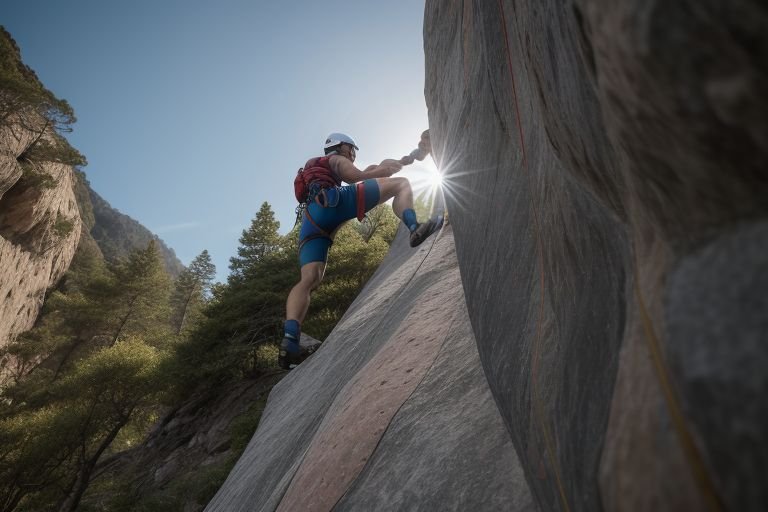Sport climbing has rapidly gained popularity as a competitive sport, culminating in its inclusion in the Olympic Games. The “Sport Climbing Combined Olympics” refers specifically to the combined event format that showcases athletes’ skills across multiple climbing disciplines.
This article delves into the intricacies of sport climbing, its evolution within the Olympic framework, and the significance of the combined format, particularly as it pertains to the upcoming Paris 2024 Olympics.
Overview of Sport Climbing
Sport climbing is a modern discipline that has evolved from traditional rock climbing. It is characterized by three main disciplines:
- Bouldering: Climbers tackle short, challenging routes without ropes, relying on crash pads for safety.
- Lead Climbing: Athletes climb longer routes while clipping into fixed anchors for protection.
- Speed Climbing: Competitors race against the clock on a standardized route.
Each discipline tests different skills and techniques, making sport climbing a multifaceted sport that requires a blend of strength, strategy, and agility.
Historical Context
Introduction to the Olympics
Sport climbing made its Olympic debut at the Tokyo 2020 Games (held in 2021 due to the pandemic), where it was featured as a combined event. This initial format included all three disciplines—bouldering, lead, and speed—within a single competition. While this approach aimed to showcase the versatility of climbers, it faced criticism for not allowing athletes to specialize in their preferred discipline. Many climbers felt that the combined format diluted their performance potential and did not accurately reflect their skills.
Evolution of the Format
In response to feedback from athletes and stakeholders, the International Federation of Sport Climbing (IFSC) and the Olympic Committee decided to modify the event structure for the Paris 2024 Olympics. The new format separates speed climbing into its own event while retaining bouldering and lead climbing as a combined competition. This change allows climbers to focus on their strengths and provides a clearer representation of their abilities in each discipline.
The Combined Event Format
Structure of the Competition
The Sport Climbing Combined event at the Paris 2024 Olympics will take place from August 5 to August 9 at Le Bourget Sport Climbing Venue. The competition will consist of two main phases:
- Semifinals: Athletes will compete in bouldering and lead climbing semifinals over two days.
- Finals: The top competitors from each semifinal will advance to the finals, where their scores from both disciplines will be combined to determine medal winners.
The scoring system is designed to reward climbers based on their performance across both disciplines, ensuring that athletes must excel in both bouldering and lead climbing to secure a podium finish.
Scoring System
The scoring system for the combined event is crucial for understanding how athletes are evaluated. In bouldering, climbers earn points based on their performance on designated routes, while in lead climbing, points are awarded based on how high they climb before falling or reaching the top. The total score from both disciplines determines their overall ranking.
Qualification Process
Qualification for the Sport Climbing Combined event involves multiple pathways:
- World Championships: Top finishers can secure spots based on their performance.
- Continental Championships: Additional places are awarded through regional competitions.
- Olympic Ranking: Athletes can also qualify through their standings in international rankings leading up to the Games.
This multi-faceted qualification process ensures a diverse representation of climbers from around the world.
Significance of Sport Climbing Combined Olympics
Promoting Inclusivity and Diversity
The changes made for Paris 2024 reflect a broader commitment to inclusivity within Olympic sports. By allowing athletes to specialize in bouldering and lead climbing separately from speed climbing, more climbers can participate and showcase their unique talents. This shift not only enhances competition but also encourages greater participation among diverse groups of climbers globally.
Showcasing Technical Skills
The combined event emphasizes technical skills essential for success in both bouldering and lead climbing. Athletes must demonstrate precision, problem-solving abilities, and strategic thinking as they navigate complex routes under pressure. This focus on technicality elevates the sport’s profile and engages audiences who appreciate skillful athleticism.
Engaging New Audiences
Sport climbing’s inclusion in the Olympics serves as a gateway for new fans to engage with climbing culture. The dynamic nature of competition—combined with visually stunning athletic performances—attracts viewers who may not have previously followed climbing events. As more people become interested in sport climbing, it fosters growth within local climbing communities and encourages new participants to take up the sport.
Preparing for Paris 2024
Training Regimens of Elite Climbers
Elite climbers preparing for the Sport Climbing Combined event undergo rigorous training regimens tailored to enhance their performance across both bouldering and lead disciplines. Key components of their training include:
- Strength Training: Building core strength and finger strength is essential for both bouldering and lead climbs.
- Technique Drills: Climbers practice specific techniques relevant to each discipline, such as dynamic movements in bouldering or footwork precision in lead climbing.
- Mental Preparation: Mental resilience is crucial; climbers often engage in visualization techniques and mindfulness practices to maintain focus during competitions.
Equipment Considerations
Athletes also invest significantly in specialized equipment designed for optimal performance:
- Climbing Shoes: High-performance shoes provide necessary grip and precision on holds.
- Chalk: Climbers use chalk to reduce hand moisture, enhancing grip on challenging routes.
- Harnesses and Ropes: For lead climbing, reliable harnesses and ropes are critical for safety during ascents.
These elements contribute significantly to an athlete’s overall preparation leading into such high-stakes competitions.
Conclusion
The “Sport Climbing Combined Olympics” represents an exciting evolution within Olympic sports, showcasing athletes’ diverse skills across bouldering and lead climbing disciplines while separating speed climbing into its own event. As we approach Paris 2024, anticipation builds around how these changes will impact competition dynamics, athlete performances, and audience engagement with this thrilling sport.
Through its unique combination of athleticism, strategy, and technical prowess, sport climbing continues to captivate audiences worldwide while fostering inclusivity within competitive frameworks. As athletes prepare for this prestigious event, they not only aim for medals but also strive to inspire future generations of climbers around the globe.









